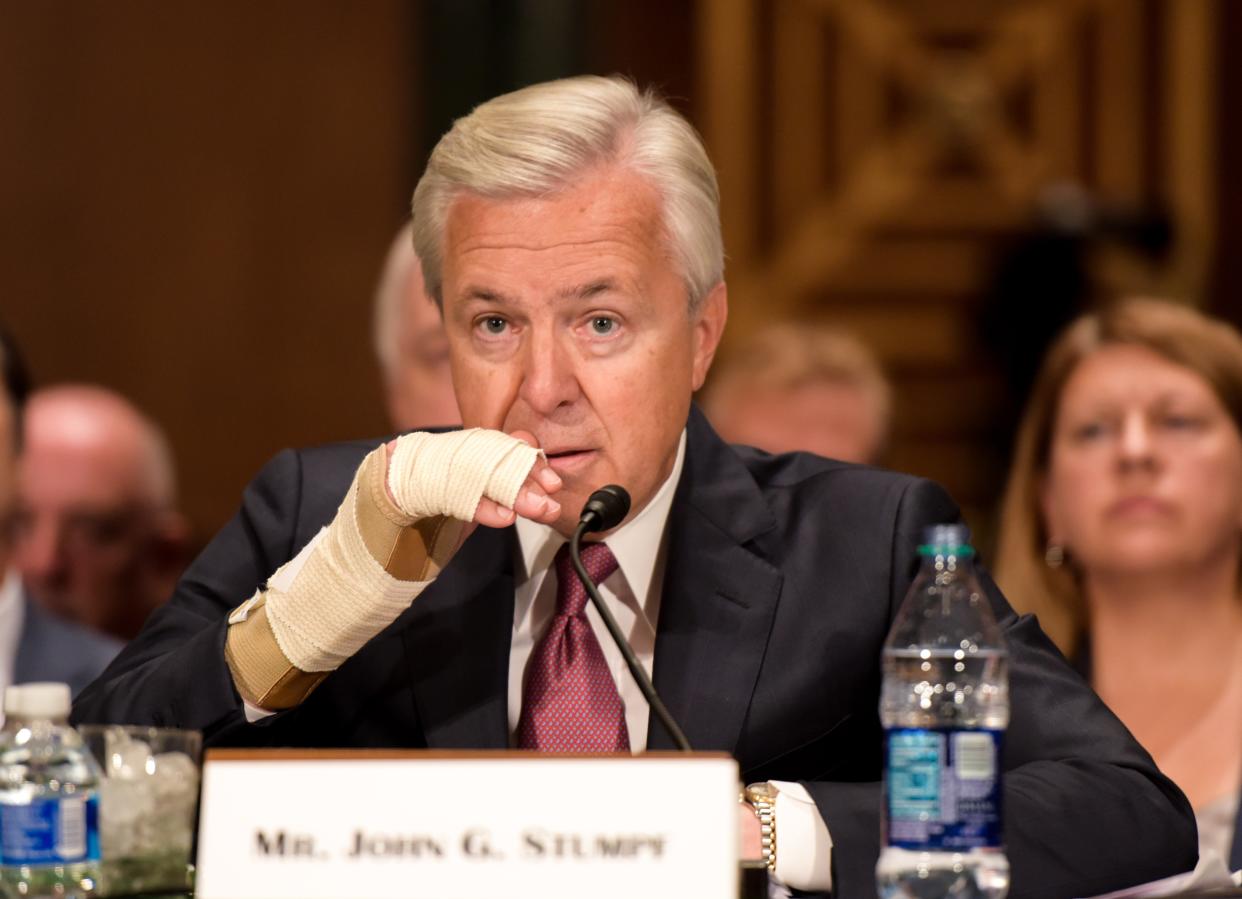Why the 5,300 Wells Fargo employees probably would have been fired anyway

There is no question that Wells Fargo’s (WFC) fraudulent creation of over 2 million accounts using personal information is bad for its business. Optics wise, it’s horrible, affecting consumers directly, leaving many of them with annoying messes to clean up.
But the mess does offer the bank a silver lining amidst all the scandal—an excuse to to cull 5,300 employees from its payroll, something Wells Fargo likely would have done eventually either way.
Today’s retail banking climate may paint a rosy picture with plenty of modern customer conveniences like mobile check deposit and shorter lines, as some bank branches direct customers to ATMs instead of tellers. But for the bank branch employees the apps and ATMs usurp, it’s shaping up to be a John Henry-esque tale of human versus machine that is sure to have a tragic ending.
In July, Bank of America’s (BAC) president of retail banking announced that the bank would likely lay off 8,400 workers, a response to the dwindling customer base that actually wanders into branches. According to the Financial Times, Bank of America’s president of retail banking laid out the trend in numbers showing how much the head count had fallen, from 108,000 employees in 2009 to 68,400, with the final personnell goals to be around the low 60,000s.
For other banks, JPMorgan Chase (JPM) made plans last year to ax one teller per branch by the end of 2016, around 5,000 total. Even banks on a slightly smaller level have suffered, with Comerica laying off 800 and closing 40 locations in July. The trend isn’t even just in the US. In Germany, Deutsche Bank (DB) shuttered 188 branches in June, cutting 3,000 employees.
In this context, Massachusetts Sen. Elizabeth Warren’s question of why the higher-ups remain while Wells Fargo has been dispatching so many lower-level employees over several years might gain an answer.
There’s no question that employees defrauding customers should be dealt with accordingly, with termination the minimum. But according to reports from CNN Money, Wells Fargo did not outline many options for success, retaliating against employees who called the ethics hotline (an employee confirmed this, but Wells Fargo itself did not comment on that matter). Bloomberg’s Matt Levine laid it out best, breaking down the paths down which the bank funneled its employees:
1. Open fake accounts to meet sales goals: Maybe get fired.
2. Don’t open fake accounts, miss sales goals: Probably get fired.
3. Tell executives about all the fake accounts: Definitely get fired really fast.
With all roads leading to the same outcome, it’s hard to not wonder whether Wells Fargo wasn’t looking for a certain result, given how the bank itself paved those roads with its policies. If this was in fact engineered – at least in part – to conveniently fire 5,300 employees, perhaps Wells Fargo simply underestimated the amount of bad PR.
Or maybe they didn’t. After all this scandal fades into the rear-view mirror, the bank may not emerge quite so battered as it seems. The $185 million fine from the CFPB, big as it sounds, wasn’t that big as far as banking fines go, as a former director at the FTC’s Bureau of Consumer Protection told CNN Money.
From the customer side of things, though Wells Fargo may not lure any new fans, several factors will keep consumers from leaving. Not only is it a huge pain to change banks, but people who discovered credit cards in their names may not want to close them, since that would actually hurt their credit. Eventually, everybody could just forget it all, accepting the scandal as just more bad behavior of banks they’ve come to expect.
Shaking matters up further, Wells Fargo’s board used the pressure applied by Congress—and the general public—to announce a clawback in executive pay on Tuesday for CEO John Stumpf and the head of community banking, Carrie Tolstedt, whose retirement was simultaneously announced. In addition to assuaging the public’s lust for executive blood, this move keeps $60 million in stock under the company’s ownership, around 32% of the fine. The bank also said it would consider further clawbacks as its independent inquiry goes forward. The stock rose in after-hours trading following the news but has since dropped back to Tuesday levels.
Wells Fargo may face more fallout over the scandal: The Labor Department announced it will investigate the company’s workplace practices. And on Thursday, Congress once again hosts its top brass, and senators such as Elizabeth Warren have likely begun preheating the oven.
Ethan Wolff-Mann is a writer at Yahoo Finance focusing on consumerism, tech, and personal finance. Follow him on Twitter @ewolffmann.
Read more:
Amazon’s review-for-free-stuff policy wrecks its reviews
This four-letter word will get you better customer service on the phone
Wells Fargo customers recall their shock upon discovering fraudulent accounts
Americans don’t understand ‘premium’ gas, and it’s costing them billions

